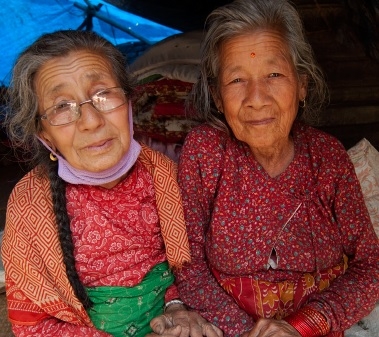Nepal: 100 days after the earthquake

The 25 April earthquake in Nepal, and the 12 May earthquake that followed it, left behind massive destruction and devastation that affected millions of people. According to the government of Nepal, more than 8,800 people were killed, over 604,900 homes were destroyed and around 290,000 were damaged.
In the 100 days since the first disaster, Habitat for Humanity, and many other international relief agencies, have responded in Nepal. While Habitat has completed a great deal of work to help earthquake affected families, more work remains to be done.
Since the Nepal earthquake, Habitat has organized local volunteers to remove rubble and debris, supporting forty families in three disaster affected districts.
More than 2,300 temporary shelter kits have been given out in four districts. These kits are key to protecting families from rain during the current monsoon season. Other families have been using these kits to repair their homes.
When Sanila Danuwar, 27, moved in to the temporary shelter built by Habitat for Humanity in late May, it was a simple structure made of corrugated tin sheets, wires and rods. When a Habitat team revisited Sanila and her family a week later, the shelter had been upgraded with ‘walls’ made of tin sheets and bamboo salvaged from the family’s earthquake-affected house.
“Now I am not worried that a strong wind might blow my home away,” she said. Sanila and her family will focus on eventually building a permanent home.
Other Habitat programs have supported the recovery through other methods. As community water systems were destroyed by the earthquakes, 20,000 water backpacks have been distributed in seven districts, involving more than 60 volunteers.
Forty surveyors have conducted safety assessments of 3,400 houses. The aim is to have a team of 72 surveyors evaluate 15,000 homes.
In total, more than 840 local volunteers have supported Habitat’s disaster response activities to date and 25,740 families in Nepal have benefitted from Habitat for Humanity assistance since the earthquakes struck.
Construction of the first permanent home started with a groundbreaking ceremony on 8 July for Ranuki Danuwar, 45, and her husband Kansa, 47. About 30 people, including staff, volunteers, and other community members who would be receiving permanent homes, witnessed the milestone.
Ranuki had already received temporary shelter materials. “I’m very happy that we have shelter using materials from the temporary shelter kit that Habitat for Humanity provided,” she said. “I’m even happier now, knowing that permanent houses will be built for families in my community.”
For Ranuki, her experience of the earthquake has taught her one thing: “I realized that earthquakes don’t kill people. What kills people are the poorly-made structures that they built.”
She urged: “We need to tell more people, even outside of Nepal, that our focus should be on building earthquake-resilient houses.”
Habitat for Humanity aims to directly build 100 permanent homes in one location as an example of complete community revitalization. In addition to building homes, Habitat for Humanity will liaise with others to provide infrastructure and basic services.
A further 45 demonstration permanent homes will also be built in various locations. These will be used by Habitat to provide hands-on training for partners and communities with guidance on using appropriate and affordable materials, and the step-by-step process to building an earthquake-resilient house.
To reach thousands more families and to help them build these earthquake-resilient houses, technical assistance will be provided by teams recruited and trained by Habitat for Humanity. This work is expected to take place over the next 3-5 years.
While aftershocks continue in Nepal, and the monsoon rain season is ongoing, Habitat shelter programs will continue to move forward in the coming months. The construction of permanent houses is a high priority. Rubble removal work will continue as part of the permanent home construction program, and will be community-led. Another 1,700 temporary shelter kits will also be distributed by the end of August, bringing the total distributed to 5,000 kits.
The Nepal government will be implementing a rehabilitation and reconstruction plan to ensure the building of cost-effective and earthquake-resistant homes. In view of the great need, Habitat for Humanity aims to build capacity to support families accessing financial resources, along with construction technical assistance and construction skill training.
As always, Habitat for Humanity’s work in Nepal will continue through close collaboration with an extensive network of partners, and in coordination with the government, to achieve a common goal where everyone has a decent place to live.
For more information about Habitat for Humanity International please visit www.habitat.org.
Download the presentation below (you need to sign-up or log-in)









